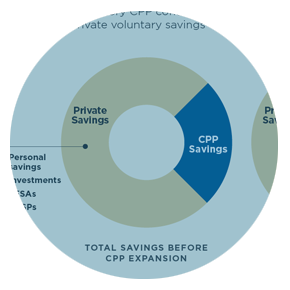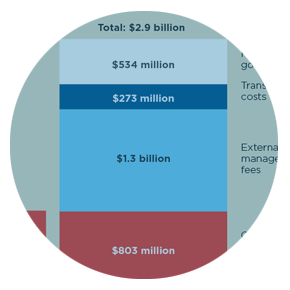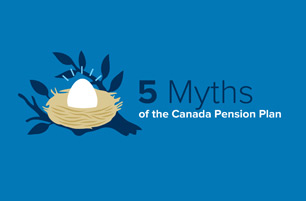5 Myths of the Canada Pension Plan



CANADIANS ARE NOT SAVING ENOUGH FOR RETIREMENT
The evidence shows most Canadians are well prepared for retirement and claims to the contrary ignore the ample resources outside the formal pension system available to Canadians when they retire.


Higher CPP contributions will
increase overall retirement savings
increase overall retirement savings
Forcing Canadians to contribute more to the CPP will reduce their private voluntary savings (in RRSPs, TSFAs, and other investments) resulting in little or no increase in total savings.


THE CPP IS A LOW-COST PENSION PLAN
The total investment and administration cost of running the CPP ($2.9 billion) is much higher than the operating expenses of the Canada Pension Plan Investment Board ($803 million), the entity that manages the CPP’s investments.


THE CPP PRODUCES EXCELLENT RETURNS
FOR INDIVIDUAL CONTRIBUTORS
FOR INDIVIDUAL CONTRIBUTORS
The CPP actually provides a meager rate of return (after inflation) of just 3% or less annually for Canadians born after 1956 and 2.1% for those born after 1971.


EXPANDING THE CPP WILL HELP
FINANCIALLY VULNERABLE SENIORS
FINANCIALLY VULNERABLE SENIORS
Canada’s most financially vulnerable seniors, including single seniors living alone with a limited work history, will gain little or nothing from an expanded CPP partly because many have not contributed to the CPP and therefore will not receive additional CPP retirement benefits.



